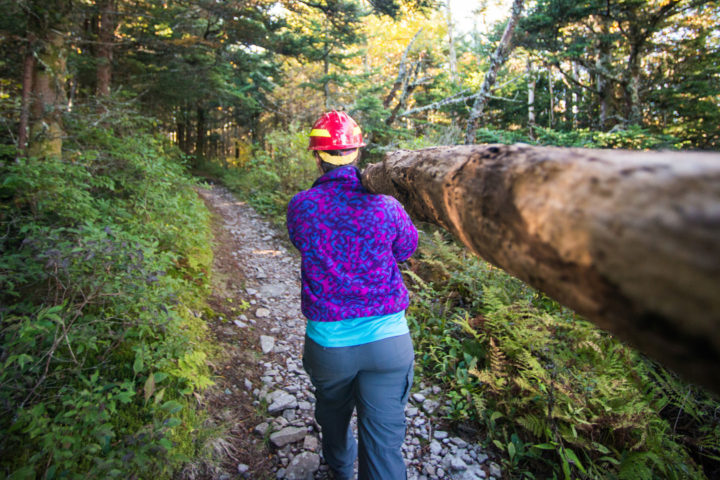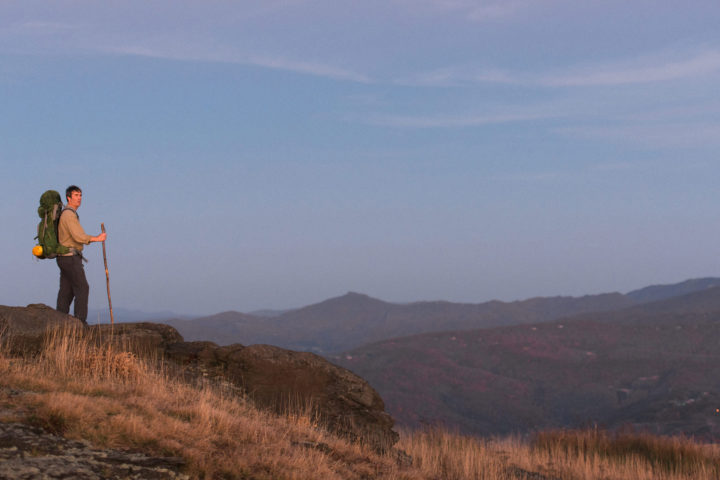
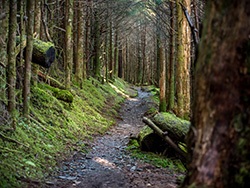
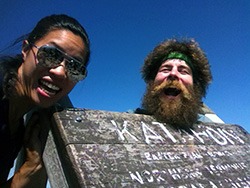



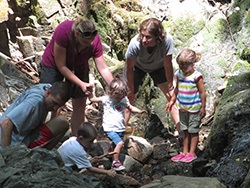
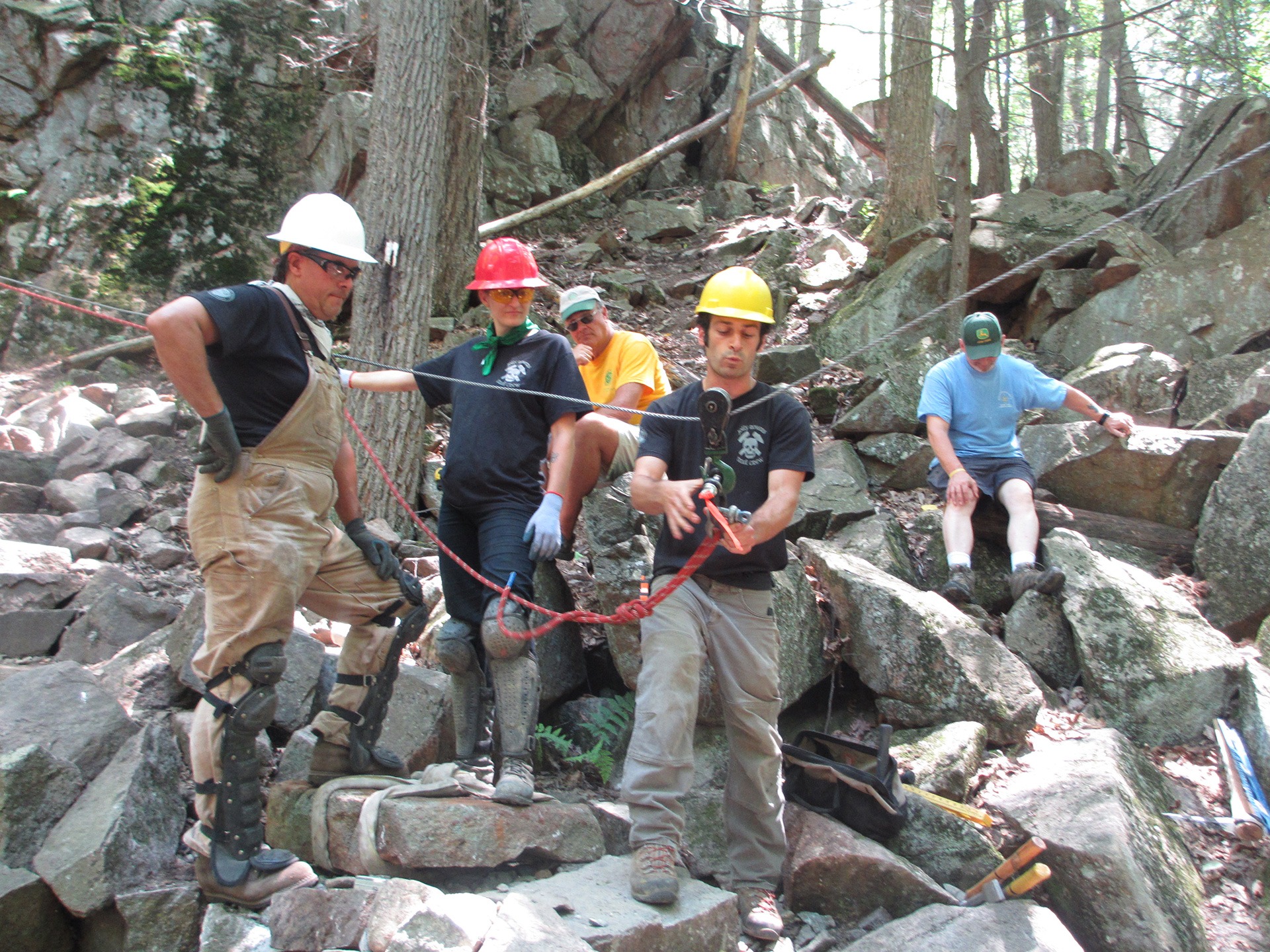
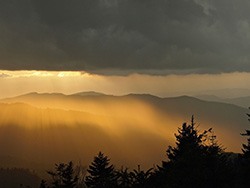


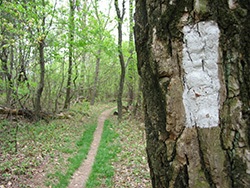
Photo by Horizonline Pitcures

Established in 1925, the Appalachian Trail Conservancy (ATC) leads the effort to protect, maintain and celebrate the A.T. We are part of a unique cooperative-management system, working with numbers of local, state and federal partners to ensure greater protections for the Trail. Our partners include the National Park Service, the U.S. Forest Service, dozens of state agencies and 30 local Trail-maintaining clubs.
The ATC is largely funded by private donations from individuals, foundations, and corporate partners. Their support ensures that the one-of-a-kind A.T. experience is protected from development, increasing use of the outdoors and other impacts.
An all-volunteer staff in Washington, D.C., managed the organization for its first four decades. With central offices in Harpers Ferry, West Virginia, a quarter-mile from the Trail since 1972, the ATC today has a full-time staff of about 60 (along with more than a dozen part-time and seasonal employees) and is governed by a 16-member Board of Directors. It has an annual operating budget of $12 million. In addition to its Headquarters and Visitor Center in Harpers Ferry, the ATC manages Visitor Centers in Damascus, Virginia, and Monson, Maine.
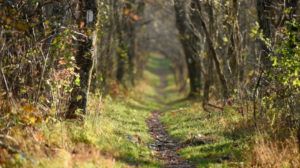 The Appalachian National Scenic Trail is the longest hiking-only footpath in the world, measuring 2,197.4 miles in length. The Trail travels through fourteen states along the crests and valleys of the Appalachian Mountain Range, from its southern terminus at Springer Mountain, Georgia, to the northern terminus at Katahdin, Maine.
The Appalachian National Scenic Trail is the longest hiking-only footpath in the world, measuring 2,197.4 miles in length. The Trail travels through fourteen states along the crests and valleys of the Appalachian Mountain Range, from its southern terminus at Springer Mountain, Georgia, to the northern terminus at Katahdin, Maine.
Known as the “A.T.”, more than 3 million people visit the Trail every year and over 3,000 people attempt to “thru-hike” the entire footpath in a single year. People from across the globe are drawn to the A.T. for a variety of reasons, such as reconnecting with nature, escaping the stress of city life, meeting new people or deepening old friendships, or experiencing a simpler life.
Completed in 1937, the A.T. is a unit of the National Park System. It is managed under a unique partnership between the public and private sectors led by the Appalachian Trail Conservancy.
How long is the Appalachian Trail (A.T.)? The A.T. is more than 2,190 miles long, stretching through 14 states from Katahdin, Maine to Springer Mt. in Georgia.
How many people use the Trail? Approximately three million people visit the Trail every year. More than 3,000 people attempt a thru-hike of the entire A.T. each year, with about a quarter of those completing the Trail. The number of northbound thru-hikers has been increasing by about ten percent each year since 2010.
What is the success rate of thru-hikers? The success rate of hikers hiking the entire 2,190-mile Trail within the course of a year has remained around 25%.
What is “flip-flopping”? Flip-flopping is a variety of a thru-hike that is a win-win for both hikers and the Trail. When flip-flopping, hikers can start in the middle of the trail, where the terrain is easier and the mountains lower. By timing it correctly, hikers will miss the majority of northbound crowds, allowing them a more authentic experience. Furthermore, smaller crowds decrease erosion of the Trail, making it an ideal solution. For more information on flip-flopping and other alternative forms of thru-hiking, click here.
What are the safety concerns for hikers? Lyme disease and other tick-borne illnesses are the biggest concerns along the A.T., as ticks live in wooded and grassy areas throughout the U.S. Preventative measures can greatly reduce the chance of contracting these illnesses. Dehydration, which can easily be prevented, is another common ailment that can affect hikers.
Dangerous animal encounters are rare on the A.T., but hikers can further minimize these risks by properly storing food and practicing Leave No Trace principles. While the A.T. is safer than most places, it is not immune to crime. Hikers are advised to stay aware of their surroundings and to travel with other trusted individuals; whenever possible, hikers should check in with a trusted individual and provide them with their location and plans. Hikers should always carry a detailed map of the area to help orient themselves or, in the event of an emergency, to help rescuers or law enforcement more quickly identify their location. Cellular coverage is unpredictable along the A.T.; hikers should not rely exclusively on mobile phones or other electronic equipment when traveling in the backcountry.
“Know before you go” is the key for a safe hike — please visit the pages for health and safety for more information on the various risks on the A.T. and how to reduce them.
What are the demographics of A.T. hikers? Hikers of all ages enjoy the A.T. Comprehensive, current data is not available, but the number of female thru-hikers has been slowly increasing over the past several years: they represented 28% of thru-hikers in 2014, an all-time high. International hikers also represent a growing percentage, now comprising about 5% of all thru-hikers.
Thru-hikers tend to consist of younger individuals (typically in their 20s) and retirees. Day hikers tend to be more diverse in age. With increased attention on the A.T. in recent years, as well as an emphasis on fitness across the globe, the Trail has attracted more and more people from all walks of life and locations around the world.
What is “Leave No Trace”? Leave No Trace is an educational program that combines knowledge, skills, and ethical responsibility. Central to the Leave No Trace program are seven principles that demonstrate ways in which outdoor enthusiasts can minimize their impact on the environment and their fellow adventurers. Outdoor organizations, including the ATC, provide Leave No Trace training, equipment, expertise, and logistical support for everyone — from novices to experienced travelers — through Master Educator Courses, Training Courses, and Awareness Workshops. For more information on Leave No Trace principles, click here.
What is a ridgerunner? Ridgerunners and caretakers are generally seasonal employees assigned to hike and camp along high-use sections of the A.T. or to remain at heavily used overnight sites. The ridgerunner and caretaker program helps promote a quality recreational trail experience by talking to visitors about the A.T. and its intended primitive experience, its location, regulations, and traditions, as well as ways they can minimize their impact on the Trail. For more on the ridgerunner and caretaker program, click here.
Is crowding a problem? The A.T offers hundreds of day hikes and overnight sites over its 2,190-mile length. The vast majority of the A.T. has fairly light or moderate usage and can accommodate many more people. However, a few areas are already heavily trafficked or over capacity, especially the most famous “beauty spots” on popular weekend days and overnight sites in many locations during certain times of the year. The key to limiting damage to the Trail is by dispersing use and educating hikers in Leave No Trace practices. The ATC encourages people to visit the Trail and all it has to offer while also urging hikers to come properly prepared and choose uncrowded areas, or to visit popular sites outside of peak times.
How is the ATC addressing crowding? The ATC has designed a task force to prepare for larger numbers of hikers by promoting Leave No Trace practices, dispersing start dates of thru-hikers through a voluntary thru-hiker registration system, increasing the number of ridgerunners, and analyzing carrying capacity along high-use areas, among other strategies. The task force has also been promoting two new patterns of hiking that better disperse hikers and reduce impacts. One is promoting alternative thru-hike itineraries that encourage thru-hikers to start their hikes mid-Trail; another is introducing the “14-State Challenge,” which promotes enjoyment of the diverse landscapes of the A.T. by day-hiking a piece of each of the states the A.T. passes through. Hikers will be encouraged to select locations near A.T. Communities that offer amenities for hikers and will benefit economically from this initiative.
Hiker education is of the utmost importance for keeping the Trail in pristine condition. The more prepared and informed hikers are about where and when certain areas of the Trail have high usage, the more they can reduce their impacts and the better their experiences will be — and the Trail will be better off, too.
What are the biggest threats and challenges the ATC faces? The ATC is facing a myriad of threats and challenges, mostly in the form of increased development along or near the Trail. Energy infrastructure such as gas pipelines, electric lines and wind farms, as well as other forms of commercial development, threaten to spoil some of the iconic viewsheds along the A.T. and could potentially pose a threat to the ecosystems of several endangered or at-risk species. The ATC is working to expand its reach beyond the Trail itself to the surrounding landscape in order to preserve not only the environment, but also the beautiful experience that hikers have come to appreciate. For more information about the ATC’s conservation efforts, click here.
Is the ATC continuing to reroute the Trail? The ATC will continue to reroute the Trail as necessary for a variety of reasons, such as making the footpath more sustainable and allowing fragile or ecologically damaged areas to regrow. However, this work will be relatively minor compared to prior efforts.
How can hikers limit their impact on the Trail? Hikers can protect the Trail by properly preparing and educating themselves about Leave No Trace practices. By not following ethical Trail practices, hikers risk not only degrading the Trail for future generations, but also ruining the experience for their fellow hikers.
Hikers are also encouraged to participate in the “14-State Challenge” and section hike in each state rather than thru-hiking. However, if hikers want to thru-hike, doing a flip-flop hike that starts mid-Trail will not only help reduce crowding and its associated impacts, but will also allow hikers to avoid overcrowded conditions and begin in more moderate terrain than is present at either terminus. All thru-hikers are asked to register their start date using the Voluntary Thru-Hiker Registration page in order to avoid having too many hikers starting their thru-hikes at the same time.
We are the stewards of the world’s longest hiking-only footpath, the Appalachian Trail.
Read the latest news and updates about the Appalachian Trail and our work to protect it.
Learn more about ATC's work and the community of dreamers and doers protecting and celebrating the Appalachian Trail.

